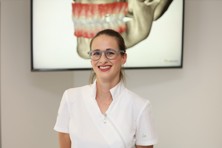FAQ
We are here for all your questions, from basic dental hygiene to complex oral surgical procedures.
FAQ
Payment options
How can I pay for services?
You can pay for our services in cash or with cards, without interest. Find out more on the Payments page.
Appointment booking
Can I book online?
Sure, you can book online via the Bookings page (link below) or by clicking on the WhatsApp icon.
Payment for procedures during therapy
I have a quote for the entire treatment, how can I pay for the individual procedures?
Payment is made at each visit, meaning that all services provided are paid for during the visit in which they were provided.
Working hours
What are the working hours?
Our working hours in Rijeka are Monday to Friday from 7:00 to 19:00 and Saturday from 7:00 to 17:00, in Poreč from Monday to Saturday from 8:00 to 16:00. We do not work on Sundays and public holidays.
Patients' rights
What are patient rights?
Patients have a number of rights to ensure their safety and satisfaction, including the right to information, treatment decisions, data confidentiality and privacy. These rights are guaranteed by the Patients’ Rights Act (Official Journal 169/04 and 37/08).
What does the right to co-decision mean?
This means that you have the right to be informed about your health status and medical procedures and to decide whether to accept or refuse a certain treatment or diagnostic procedure. In exceptional cases provided by the Law, when this is necessary for your health, these rights may be limited.
What information am I entitled to receive about my health?
You have the right to be informed about:
- your health status,
- recommended tests and treatments, benefits and risks,
- treatment results,
- possible alternatives to the proposed procedures,
- your health insurance rights.
- the course of the procedures and the recommended lifestyle.
You should obtain this information from the doctor who provides the service directly to you in a way that is understandable, either orally or in writing. You also have the right to ask for a second opinion from another specialist about your health status.
Can I decide whether to accept or refuse a procedure?
Yes, you have the right to accept or refuse any diagnostic or therapeutic procedure, except in the case of emergencies that could put your life at risk. If you accept the procedure, you confirm it by signing. For people who cannot sign (for example, because of blindness or deaf-mutism), an alternative procedure is provided with the help of a witness or a notarized deed.
What are confidentiality and privacy rights?
You have the right to keep all your health information confidential. You can specify in writing who can be informed and you can also prohibit this information from being shared with anyone.
During the examination or treatment, and especially when providing personal care, you have the right to conditions that guarantee privacy. This means that your privacy will be respected and you will be provided with the conditions that make this possible.

Do you have any additional questions?
We are always at your disposal. If you need more information about our services, do not hesitate to contact us.